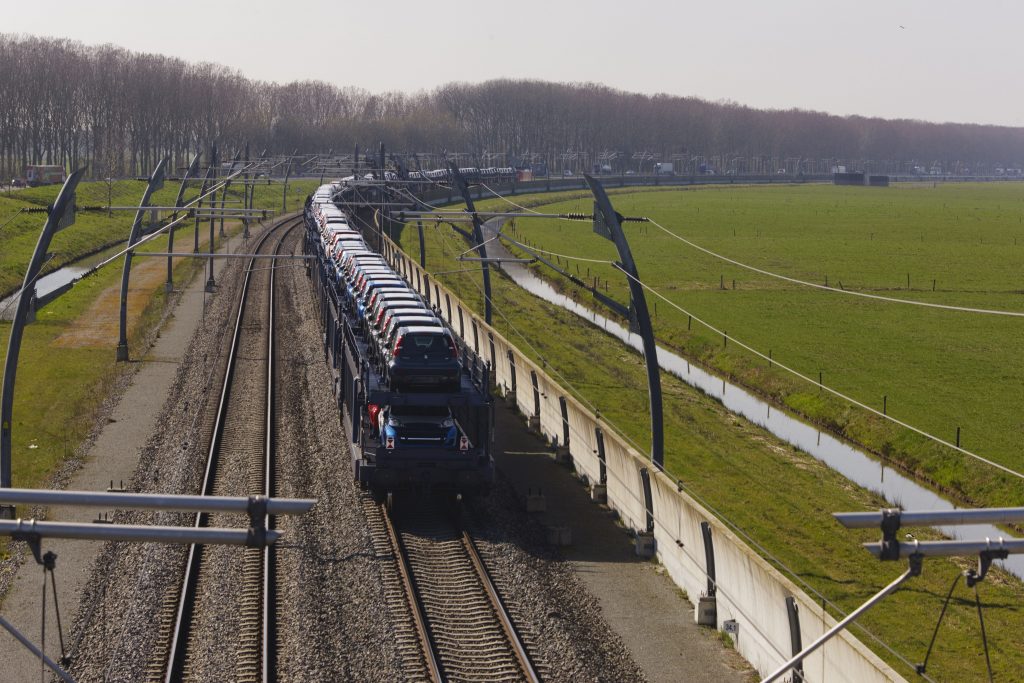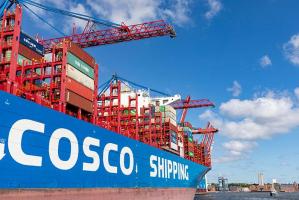First 740-metre long trains scheduled on Dutch railways
740-metre long container trains will run on Dutch railways every week. The trains will be pulled by Dutch carrier LTE and cross the border with Germany via the Brabant route near Venlo. They are the first runs officially included in the timetable of the Dutch network.
This was announced by infrastructure manager ProRail, which has been carrying out tests with 740-metre length trains last year. The conventional length of freight trains in the Netherlands is 550 or 650 metres. However, significant capacity wins can be achieved, a welcome result on the heavily congested railway network.
Advantages
“With 740-metre long trains we make better use of the railway capacity. And that is good news, because we are rapidly approaching the limits of this capacity”, said ProRail in a statement. The country has 7000km of railway track to be divided among 34 carriers of freight and passenger transport. There is not much room for new railway available, so the current capacity must be managed more efficiently.
Moreover, rail must be made a more attractive modality, industry players have said. Rail freight transport is an important modality, among others for the port of Rotterdam. However, it still competes heavily with the road. One way of dealing with this competition is reducing the costs of rail. The use of longer trains is a way to reduce those costs, as it requires fewer drivers and it saves on the rental of expensive locomotives. The aim is to increase rail freight volumes from 42 million tonnes in 2016 to 54-61 million tonnes in 2030.
Bottlenecks
In order to fully benefit from longer trains they need to be facilitated on the entire network. Currently, the large terminals and the Harbor Line in Rotterdam are capable of handling 740 meters. The Betuweroute is suitable for 740 meters up till the German border at Zevenaar/Emmerich. At Emmerich, just over the border, there is a length restriction of 690 meters,
According to ProRail, this is a first step. “The careful introduction of 740-metre long trains gives us the opportunity to investigate where bottlenecks appear and how we can respond. In this we work together with the German rail sector.
“Bottlenecks can be solved by investing in longer tracks in the port of Rotterdam. Longer waiting tracks may have to be built along the railway tracks in Tilburg and Eindhoven, among others. ProRail will determine which measures are needed together with the ministry of Infrastructure and Water Management.”
International relevance
Upgrading the Dutch railway network is not only relevant for the rail freight industry in the Netherlands, as the country is an important part of the Rhine-Alpine corridor running across Europe to Italy. In 2022, it will be possible to operate a 740-meter long train on the route Milan-Basel-Cologne-Venlo. If the Dutch network is not upgraded on time, it will form a bottleneck on this rail freight corridor.
Another important piece of the puzzle is the border crossing with Germany at Bad Bentheim-Oldenzaal. This is an important part of the North Sea Baltic corridor, which has huge potential as the volumes of traffic between the Netherlands and Poland is continuously on the rise. The corridor is the second of the TEN-T core network in terms of volumes, after the Rhine Alpine corridor.
New Silk Road
LTE is also the main carrier in the Netherlands transporting goods destined for China. It carries its trains up till Poland, where they are taken over by RTSB. General Manager of LTE Markus Bertram will make a pitch to Dutch policymakers at the European Silk Road Summit, arguing which steps must be taken to further improve the Dutch connection to the New Silk Road.
The European Silk Road Summit is a two-day international event taking place on 26 and 27 November in Venlo, the Netherlands. The programme of the event can be viewed here, registration for the event is here. Among the policymakers responding to the pitch of Bertram are ProRail and the Dutch ministry of Infrastructure and Water Management.

 EN
EN







